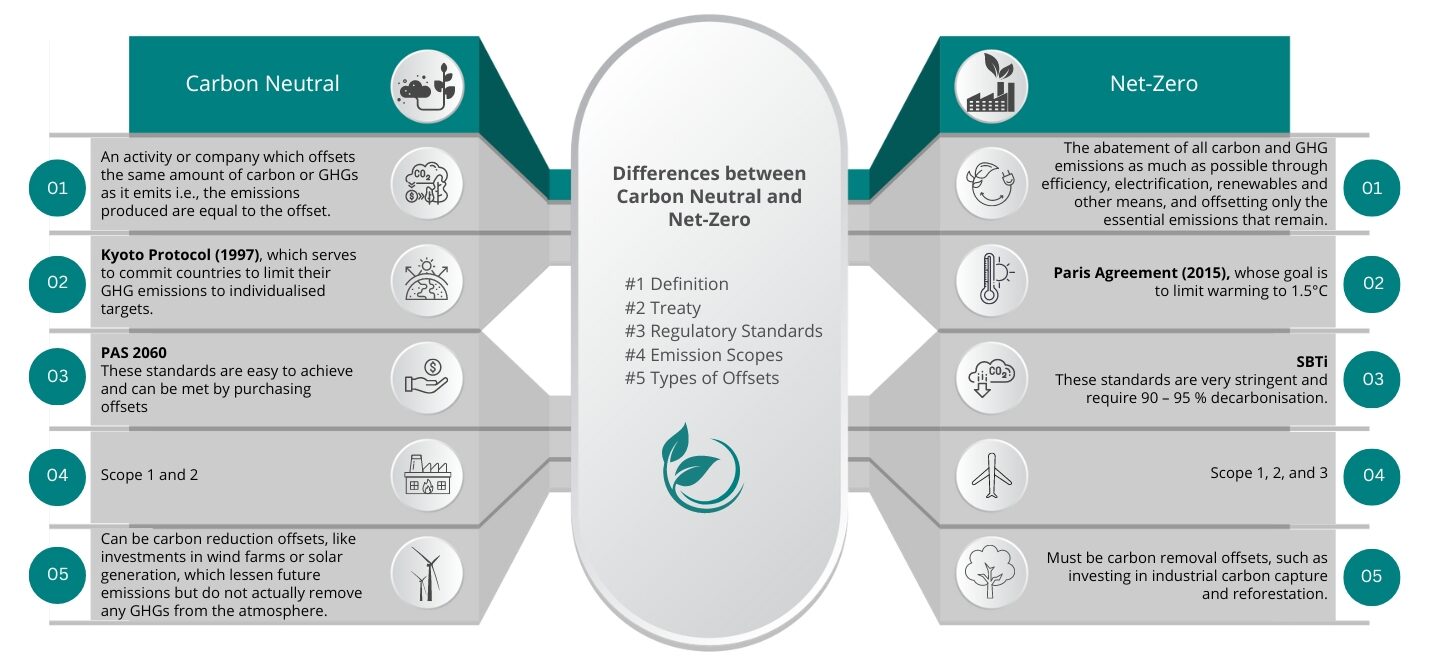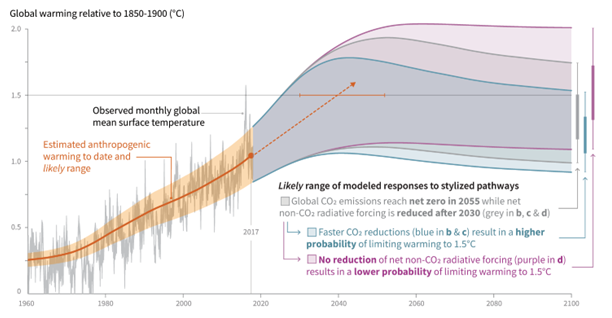What is the difference between Carbon Neutral and Net-Zero?
By Ashlee Van Wyk, WKC Group
By 2017, the average temperature of the earth had warmed by 1°C since pre-industrial levels, and it is continuing to increase at approximately 0.2°C per decade (IPPC, 2018). This unprecedented rise in temperature, owed to anthropogenic forcing, has already resulted in profound alterations to weather patterns, such as increased floods, droughts, sea level rise, and extreme weather events, as well as shifts in ecological interactions resulting in biodiversity loss. These devastating climate change impacts will continue to worsen, unless drastic action is taken to reduce greenhouse gas emissions. At the United Nations Framework Convention on Climate Change (COP 21) conference, it was agreed that limiting warming to 1.5°C would prevent the planet from facing irreparable damage. The faster we can reduce our Greenhouse Gas (GHG) emissions, the more likely we are to limit warming to 1.5°C.
As the climate crisis has evolved, we frequently hear about companies and governments alike pledging to become carbon neutral or announcing their strategies to achieve net-zero emissions by a certain date. While carbon neutrality and net-zero may appear to mean the same thing, there are in fact some important distinguishing features between the two phrases which characterise their differences.
Essentially, achieving carbon neutrality and net-zero should have the same end result – a balance between GHG emissions and their removals from the atmosphere – but the scales and ways in which this is achieved between the two initiatives are different. 
(Click to view image in full size)
The Verdict
Considering these differences, it is clear that net-zero is the more desirable target. However, it is much more difficult and expensive to attain as it is focussed on massive reductions in emissions, more demanding standards that apply to scopes beyond their direct control, and only offsetting the very last emissions that can’t be avoided. Additionally, achieving carbon removal offsets by investing in carbon sinks like industrial carbon capture and reforestation is a very costly and time-consuming task. Aiming for carbon neutrality is a far more attainable goal and is a commendable start, as long as concerted effort is indeed put towards reducing emissions and not solely relying on buying credits to offset high emissions.
[1] Allen, M.R., O.P. Dube, W. Solecki, F. Aragón-Durand, W. Cramer, S. Humphreys, M. Kainuma, J. Kala, N. Mahowald, Y. Mulugetta, R. Perez, M. Wairiu, and K. Zickfeld, 2018: Framing and Context. In: Global Warming of 1.5°C. An IPCC Special Report on the impacts of global warming of 1.5°C above pre-industrial levels and related global greenhouse gas emission pathways, in the context of strengthening the global response to the threat of climate change, sustainable development, and efforts to eradicate poverty [Masson-Delmotte, V., P. Zhai, H.-O. Pörtner, D. Roberts, J. Skea, P.R. Shukla, A. Pirani, W. Moufouma-Okia, C. Péan, R. Pidcock, S. Connors, J.B.R. Matthews, Y. Chen, X. Zhou, M.I. Gomis, E. Lonnoy, T. Maycock, M. Tignor, and T. Waterfield (eds.)]. Cambridge University Press, Cambridge, UK and New York, NY, USA, pp. 49-92, doi:10.1017/9781009157940.003.


 Observed global temperature change and modelled responses to stylized anthropogenic emission and forcing pathways (Source: IPCC, 2018)
Observed global temperature change and modelled responses to stylized anthropogenic emission and forcing pathways (Source: IPCC, 2018)